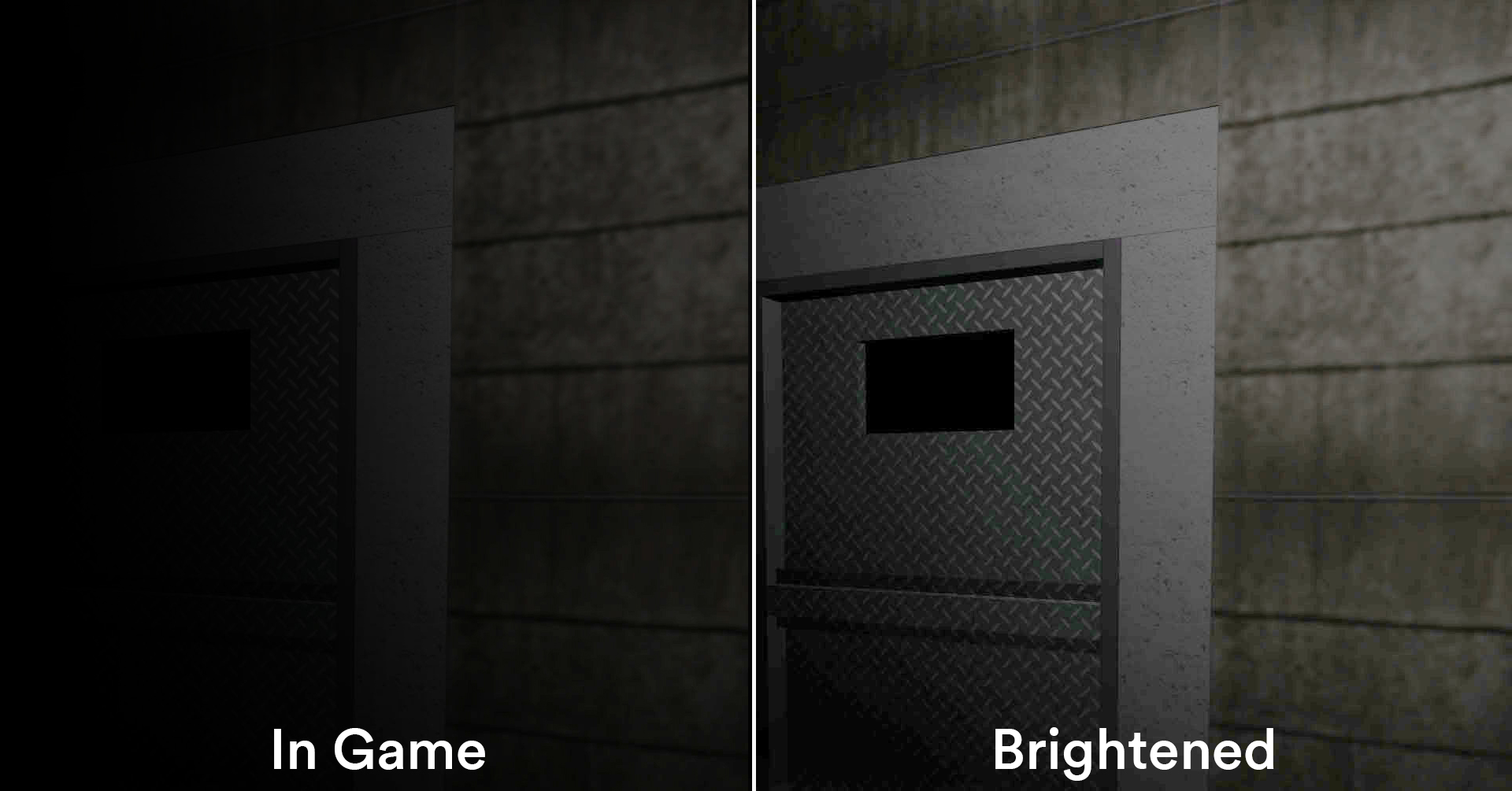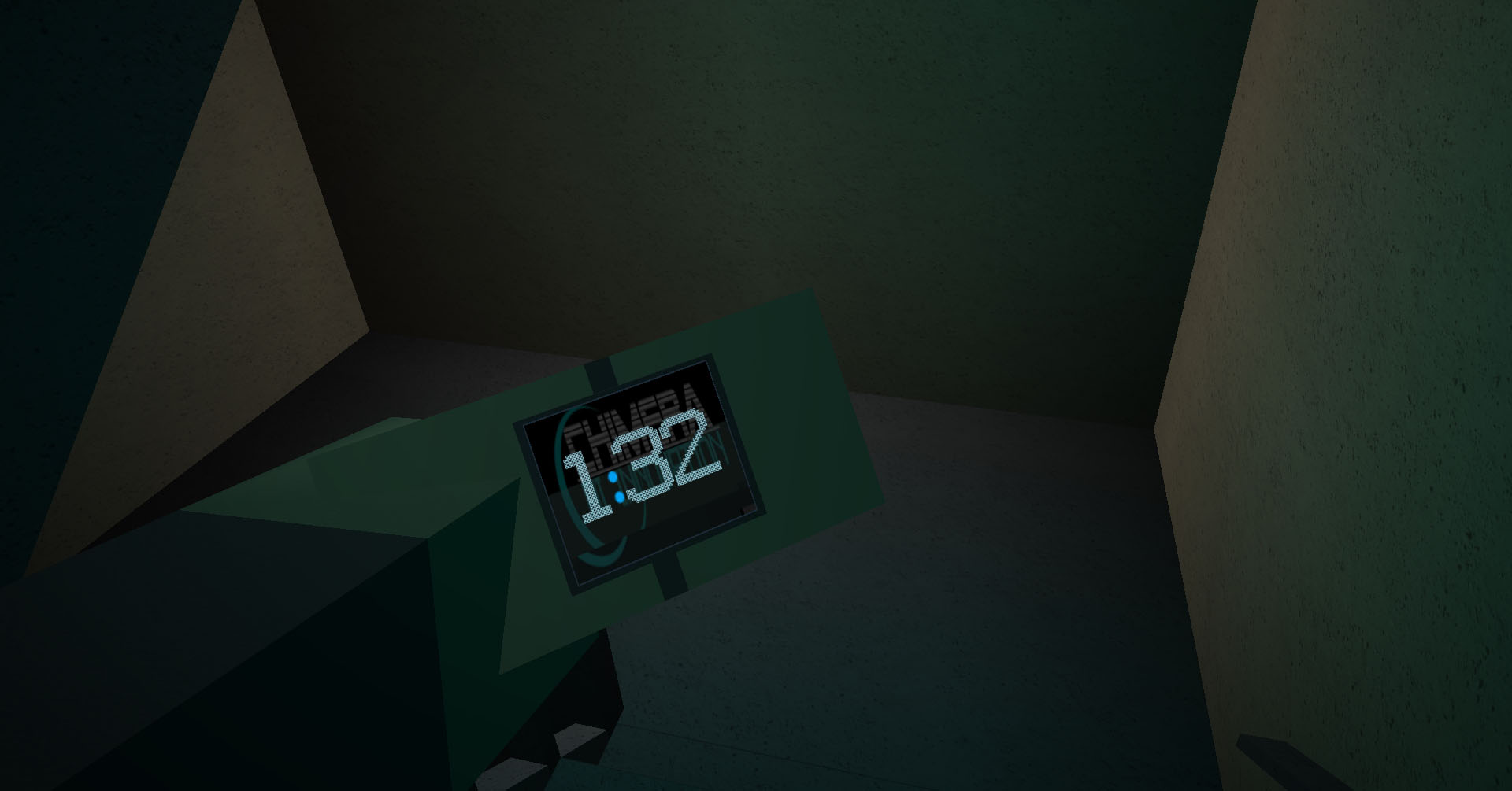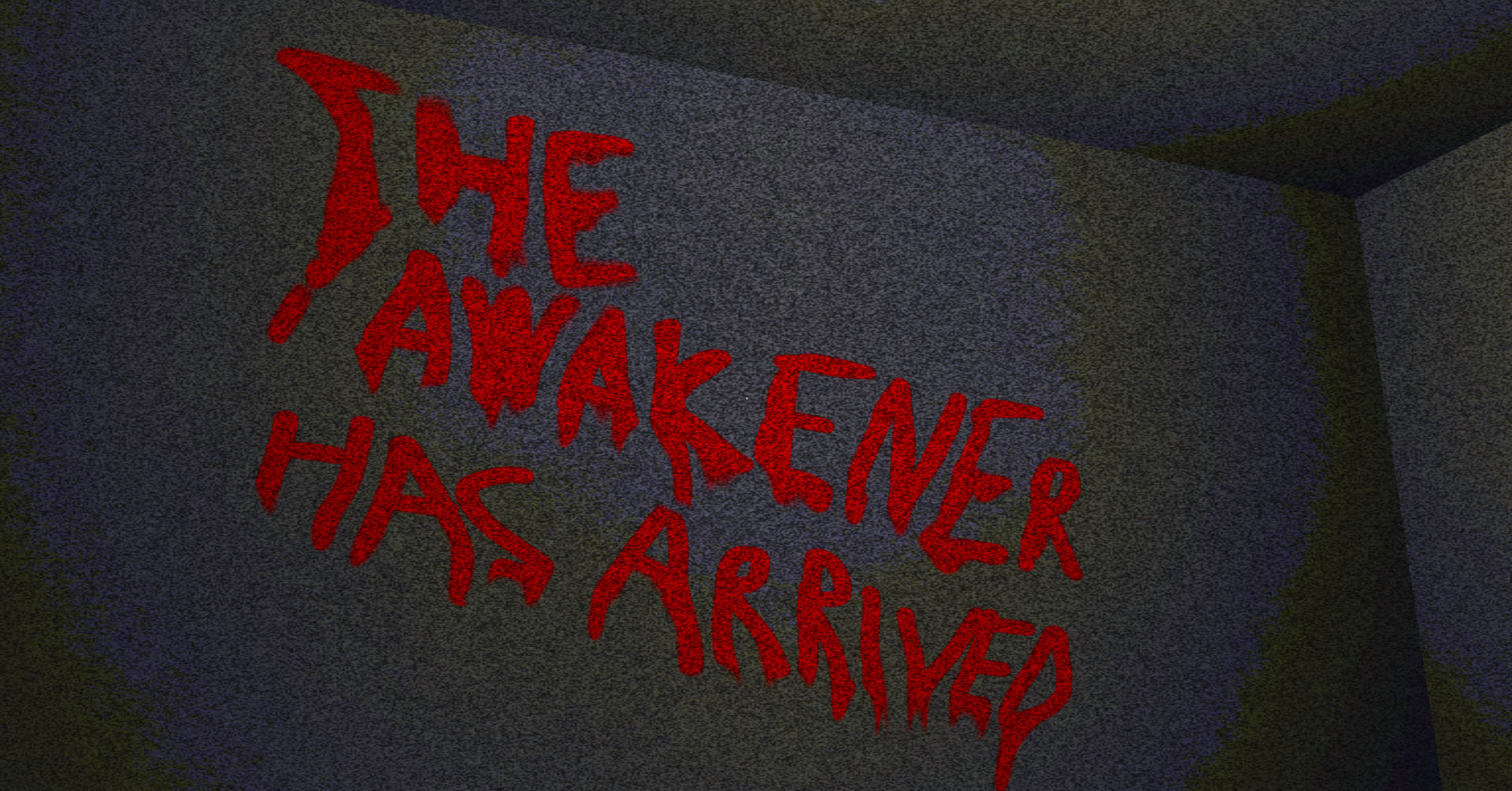As Bloxtober lurches from the crypt and onto your screens, developers everywhere have been asking us: “How can I make an effective horror game on Roblox?” To find the answer, we’ve studied some of Roblox’s best horror titles, reviewed gaming history, and even interviewed Bloxy-nominated master of horror pa00 to learn how the pros do it. Lock your doors and dim the lights as we explore the spooky strengths of the Roblox platform and stake out the fundamentals of scary game-making.
You may think you need high-resolution, gruesomely realistic graphics to scare people, but if that were the case there wouldn’t have been so many scary games made in the days where colors, sounds, and even pixels were strictly limited. Modern indie horror developers often keep graphics minimalistic on purpose to exploit a simple quirk of the human brain: when people are given only a few details to work with, their imagination runs wild filling in the rest.

You know why dark rooms are scary? Because not knowing what’s there is scarier than knowing for sure.
 Consider the monster encountered early on in pa00’s stealth-horror title RED44_SATYR44. The game warned me to run and hide if I saw danger, so the instant I glimpsed a blurry something I turned and fled. I’d seen glowing teeth and a skeleton, that much I was sure of…but what about the rest of it? Not being totally sure what was coming after me, or what it was capable of, lent wonder and energy to my terror. If I’d been able to make out more details, I wouldn’t have been nearly as terrified.
Consider the monster encountered early on in pa00’s stealth-horror title RED44_SATYR44. The game warned me to run and hide if I saw danger, so the instant I glimpsed a blurry something I turned and fled. I’d seen glowing teeth and a skeleton, that much I was sure of…but what about the rest of it? Not being totally sure what was coming after me, or what it was capable of, lent wonder and energy to my terror. If I’d been able to make out more details, I wouldn’t have been nearly as terrified.
The tendency of some Roblox models and avatars to be cheerful or toylike can be a useful asset in the hands of a canny developer. Think of how many horror movies and books you’ve seen that feature evil toys, schools, or children. There’s something spine-chilling about seeing things usually considered innocent and harmless turning sinister and deadly.
All that said, making the environments and monsters chilling isn’t your main priority. After all, nobody’s scared when even gruesome and famous horror movie monsters appear in fighting games. All the creepy art in the world won’t matter unless you’ve mastered the basic principles of horror game design.

Hey, look! It’s ominous countdown o’clock! Almost time to jump out of my skin!
When we wrote to pa00 asking what’s the key to designing effective horror, he answered: “I think the key is placing a feeling of inevitability on the player. They should know that something bad will happen to them, very soon, and they can’t do much about it.”
One of the first things your game ought to do is establish that the player is threatened. You can do this directly by simply warning them about what’s coming in a splash screen or the game description. You can do it slowly by dropping clues, such as radio reports, newspaper articles, quiet noises, and skeletons, that there’s something dangerous afoot. You can even do it implicitly, as in RED44_SATYR44, by casually providing tutorials for things like running and hiding before the player’s discovered anything that’s actually dangerous.
The important thing is that the player always feels the other shoe’s about to drop and that one false move will bring a quick and terrible end. In fact, making the players feel like they’re in danger is much more important than actually placing them in danger. If you’re clever, you can make a game that’s secretly unlosable feel more nerve-racking edge-of-seat perilous than one where any false move brings the “game over” screen. During one portion of Silent Dark, a long build-up where the player becomes aware of a loose monster culminates as the level shakes and alarms start blaring. The message is very clear: you need to run or else you’re going to be eaten. During this section, the game cleverly requires you to press tiny keypads to open doors, so every time you reach a keypad you feel yourself fumbling to open it, certain that you’ve taken too long and the monster’s about to eat you…unless, like me, you trap yourself in one of the rooms through an extremely unlikely accident and discover (as the level continues shaking and the loud noises play unabated) that the feeling of danger is just an illusion.
(Or maybe I just glitched out the monster. I wouldn’t take the risk if I were you.)
Before you emphasize difficulty, remember that losing is an end to tension. It reminds the player they’re sitting at their device playing a video game. Repeated painless deaths can grind terror into frustration very quickly.

Turns out this screen’s one of the least scary in the game.
But making the player feel threatened isn’t your only tool. In our interview pa00 explained, “It also helps to lead the player into a sense of security in a certain place or time so that they have to constantly leave these boundaries of safety on their own and brave the unknown.” You can see this principle put to work in RED44_SATYR44 whenever you hide in a locker. Sure, you’re safe as long as you remain inside your cozy little shelter, but nobody’s keen to play “Inside of a Container Simulator” any longer than they really need to. Sooner or later you’re going to have to take a deep breath and step back into danger.
Ask yourself: which takes more courage, walking through the shadows or into them? You only need a sense of self-preservation to keep going through peril, but entering it forces a player to confront their fear. Besides, games that never let players escape a sense of danger can be exhausting. It’s much more likely that someone will finish your game if they feel they can catch their breath every now and again.

Did you get my message that the Awakener has arrived? We’re out of pens and paper, so I used ketchup and a concrete wall, hope that’s okay.
Once you feel you understand the basics of how to use danger and safety, that’s when you can start getting creative with your techniques. Here are some classic scenarios come straight from the greatest horror games of all time. Can you think of interesting ways to use them in your game?
- Uh…where did this spooky message come from? (see: Light Bulb)
- What’s that timer counting down to? Uh oh… (see: RED44_SATYR44).
- This area used to be my safe spot to recuperate, but all the sudden some weird noises/movements make me think it isn’t protected anymore. (see: Silent Dark)
- I don’t see anything spooky…so why do I keep hearing weird noises? (see: Eyes)
If you’re looking for inspiration, be sure to check out other successful horror games on Roblox. Just, uh, maybe leave the lights on. Good luck!